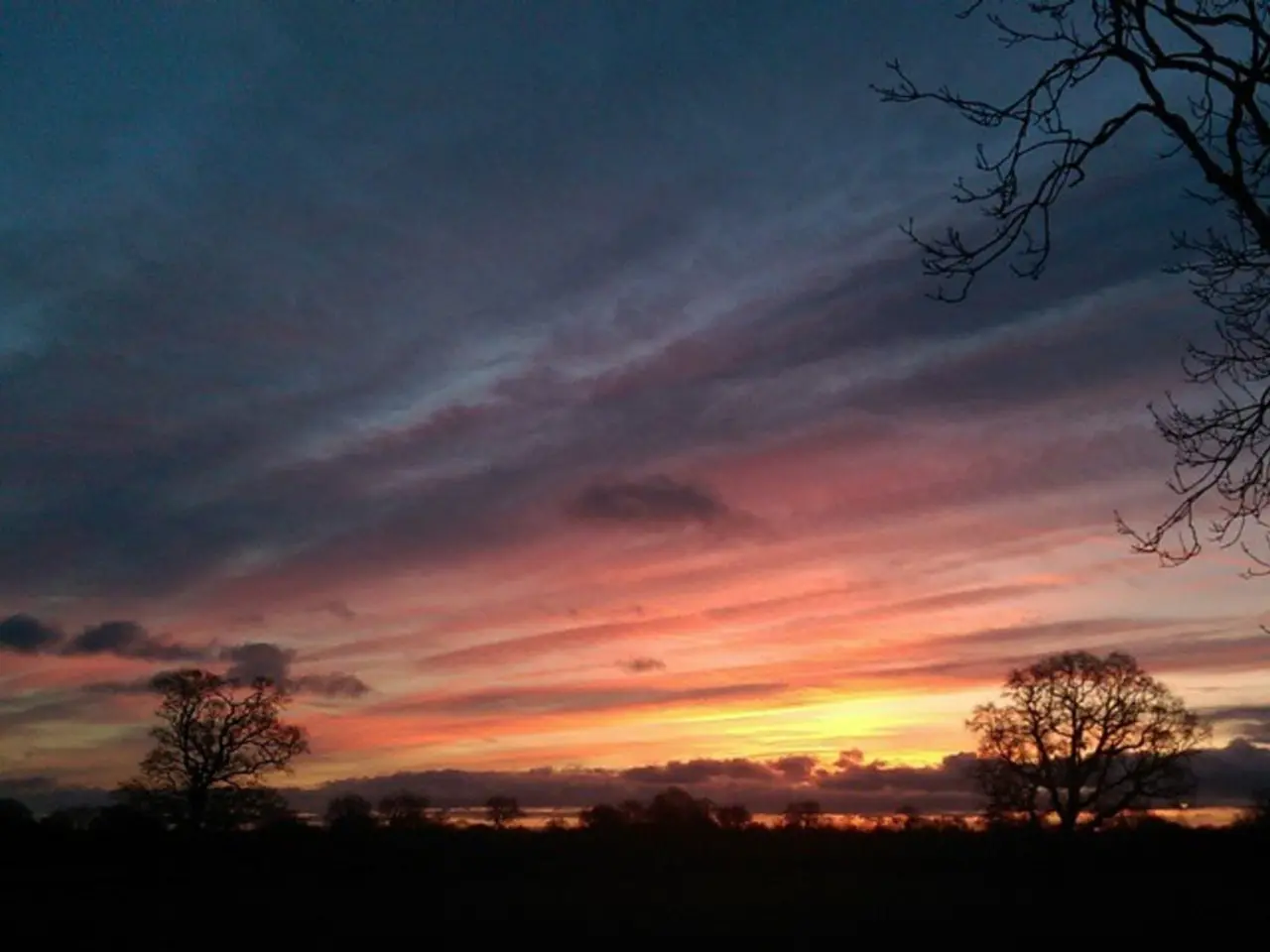Exploring the Impact of Hues in Photographic Artistry
================================================================
In the realm of photography, understanding color psychology can greatly enhance the creative process, from framing and camera settings to post-processing. Colors, with their inherent meanings and cultural connotations, can significantly impact how viewers emotionally respond to an image.
Colours with low temperatures on the Kelvin scale, around 2700 - 3000K, convey a sense of warmth, while those with high temperatures, over 5000K, suggest coldness. This temperature-based association plays a crucial role in shaping the emotional tone of a photograph.
Part of a colour's meaning is biologically innate, while much of it is based on learning or culturally determined. For example, red may symbolise passion or anger in some cultures, yet in South Africa, it is the colour of mourning. Conversely, in India, brides wear red, symbolising happiness and fertility.
The brightness of colours can also influence the viewer's reaction to an image. Bright colours, such as yellow and orange, are often associated with feelings of energy, joy, and positivity, especially during the day when humans tend to feel more alert and energetic.
Color saturation determines the viewer's reaction to an image and may change the regular emotion associated with a particular colour. For instance, a highly saturated red can evoke a sense of intense passion, while a muted red might suggest a more subdued emotion.
Cultural differences matter in colour perception, and photographers must be mindful of these nuances when capturing images intended for a global audience.
Johann Wolfgang von Goethe and Carl Jung are prominent figures in the study of the psychology of colour. Their work has provided valuable insights into how colours determine and influence human behaviour.
The preference for bright colours in humans is linked to feeling energetic, joyful, and positive during the day. Consequently, photographers can infuse a composition with joy, optimism, and love by finding a camera angle that provides a bright blue sky as background, allows pale yellow sun rays to enter the frame, or includes a patch of fresh green grass or pink flowers.
Focusing on a bright area instead of a dark one results in a more colourful, joyful, and even hopeful shot, especially when photographing an interior space with a window through which sunlight comes in. This deliberate choice can greatly enhance the emotional impact of the image.
On the other hand, focusing on a dark area and setting exposure to bring out its details can result in a somber, dramatic look. This contrast between light and dark can create a powerful emotional effect, evoking feelings of melancholy or intensity.
The Pantone Color Institute, a global authority on colour, chooses a Color of the Year, each colour coming with a story and a list of associated emotions. This annual selection can serve as inspiration for photographers seeking to incorporate current colour trends into their work.
In conclusion, colour psychology significantly impacts photography by influencing how viewers emotionally respond to an image. By understanding and applying these principles, photographers can create visually compelling and emotionally rich stories that resonate with their audience.
[1] Understanding Colour Psychology in Photography: A Comprehensive Guide. (2021). Retrieved from www.digitalcameraworld.com/uk/features/understanding-color-psychology-in-photography-a-comprehensive-guide-3823176
[2] The Psychology of Colour in Photography: A Visual Approach. (2018). Retrieved from www.photographyconcentrate.com/the-psychology-of-color-in-photography-a-visual-approach/
[3] The Impact of Colour Psychology on Photography. (2020). Retrieved from www.expertphotography.com/color-psychology-photography/
- The realm of fashion-and-beauty and photography intertwine, as color choices in garments and makeup can significantly influence perception and emotional responses.
- A camera's settings can be strategically planned to reflect a desired lifestyle, such as capturing the vibrancy of food-and-drink scenes during a lively gathering or the calm serenity of home-and-garden scenarios.
- Rules in color psychology can guide the growth of one's personal-growth journey and career-development, as understanding the impact of colors can foster more effective communication and emotional connections in relationships.
- In earning a profit from photography, using aesthetically pleasing color palettes and compositions can attract potential clients and customers interested in shopping for prints or services.
- The Pet Photography industry can benefit from applying color psychology principles, ensuring that images capture the unique personalities of animals while evoking the desired range of emotions in pet owners.
- The travel and tourism sector can leverage color psychology to create visually captivating images, evoking feelings of excitement, curiosity, and adventure for potential travelers.
- A car's exterior color can be intentionally planned based on color psychology, aiming to convey a desirable lifestyle or highlight specific colors that appeal to target audiences in the automotive industry.
- Educators and students can utilize color psychology in self-development and education-and-self-development, experimenting with color palettes to create visually appealing study environments that promote focus and creativity.
- Color psychology can help ease the process of adopting a new pet or introducing one to a partner, as understanding the emotional connotations of colors can help choose a pet that complements the personalities and preferences of both individuals in relationships.





